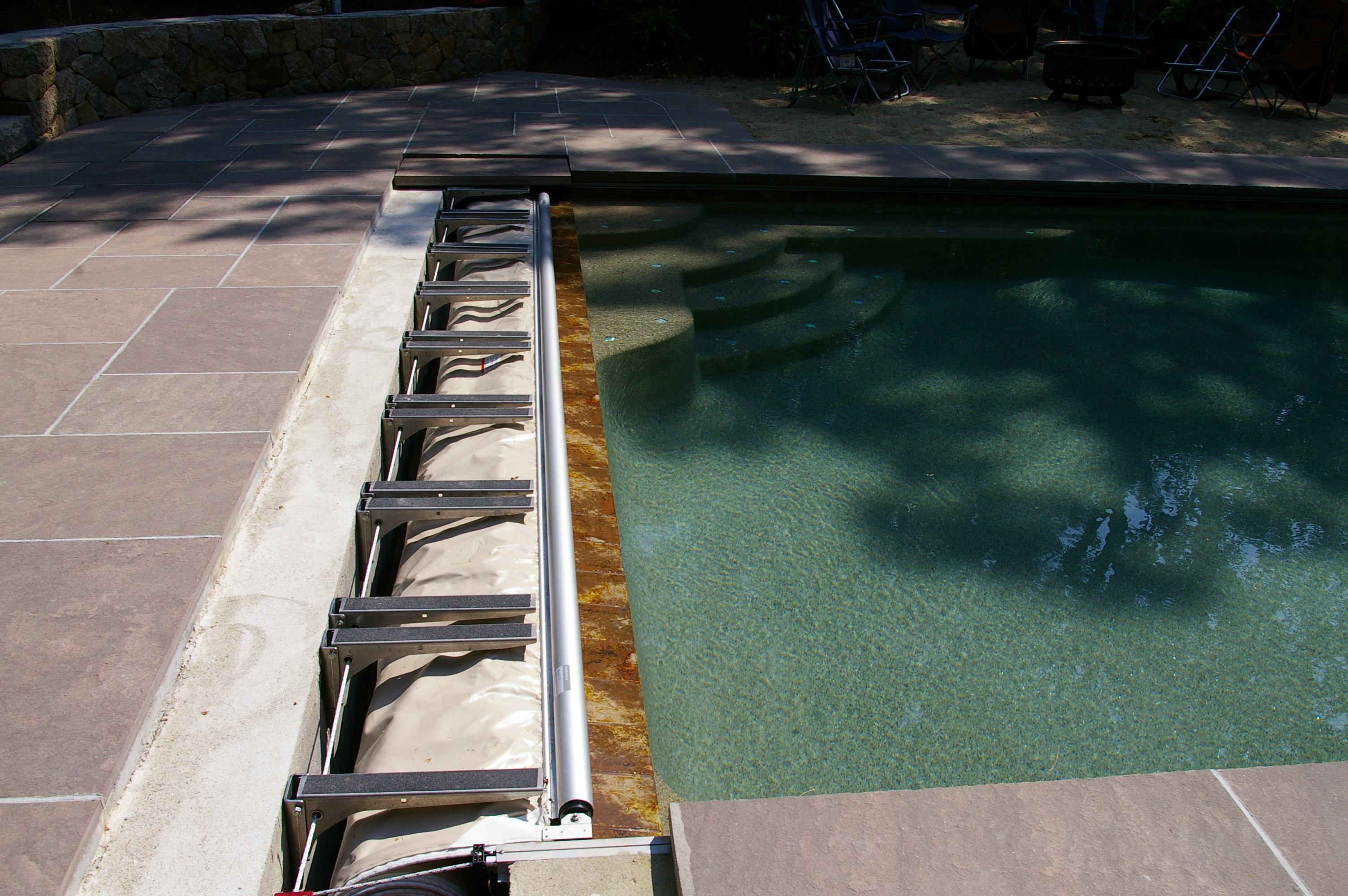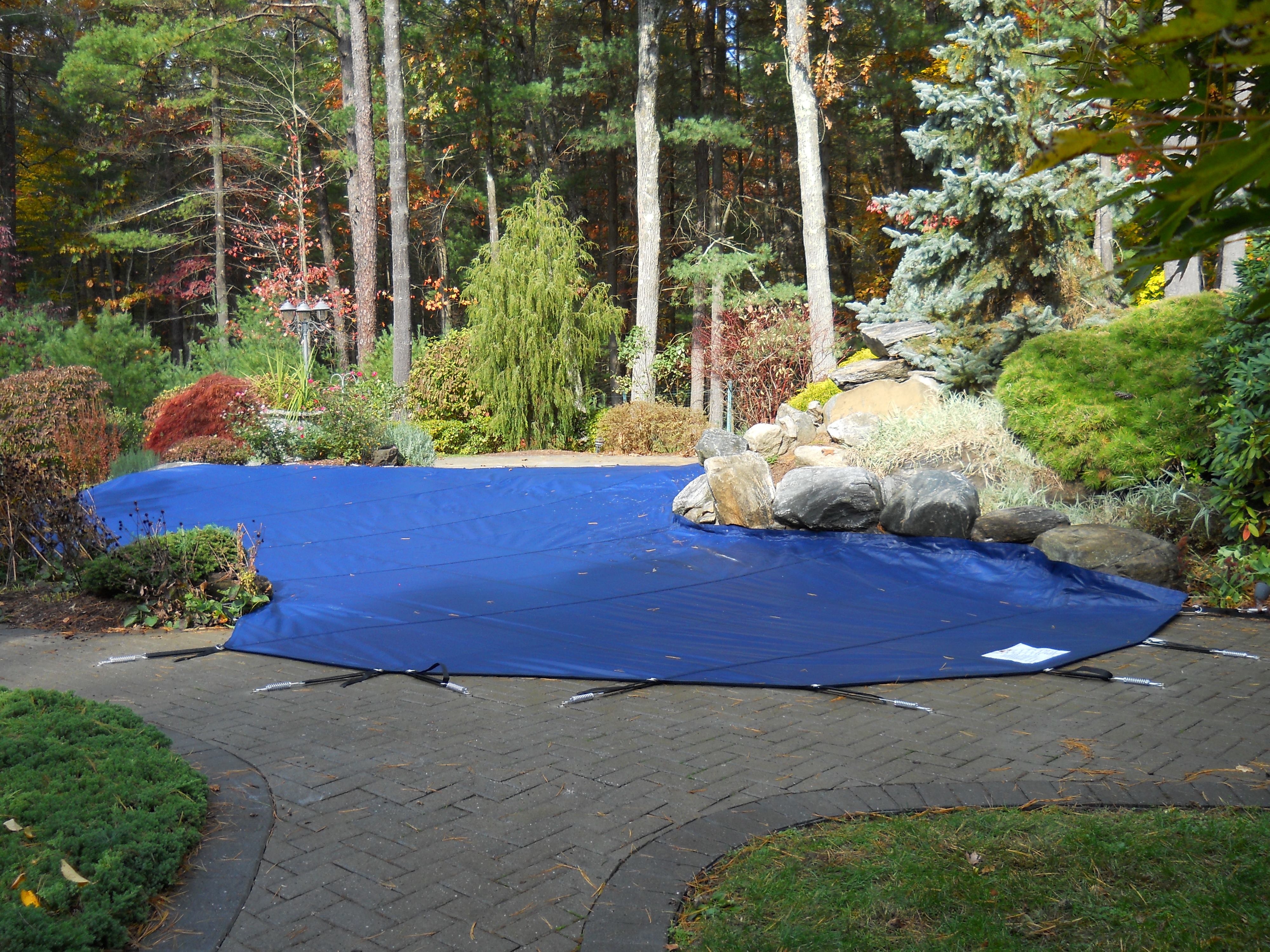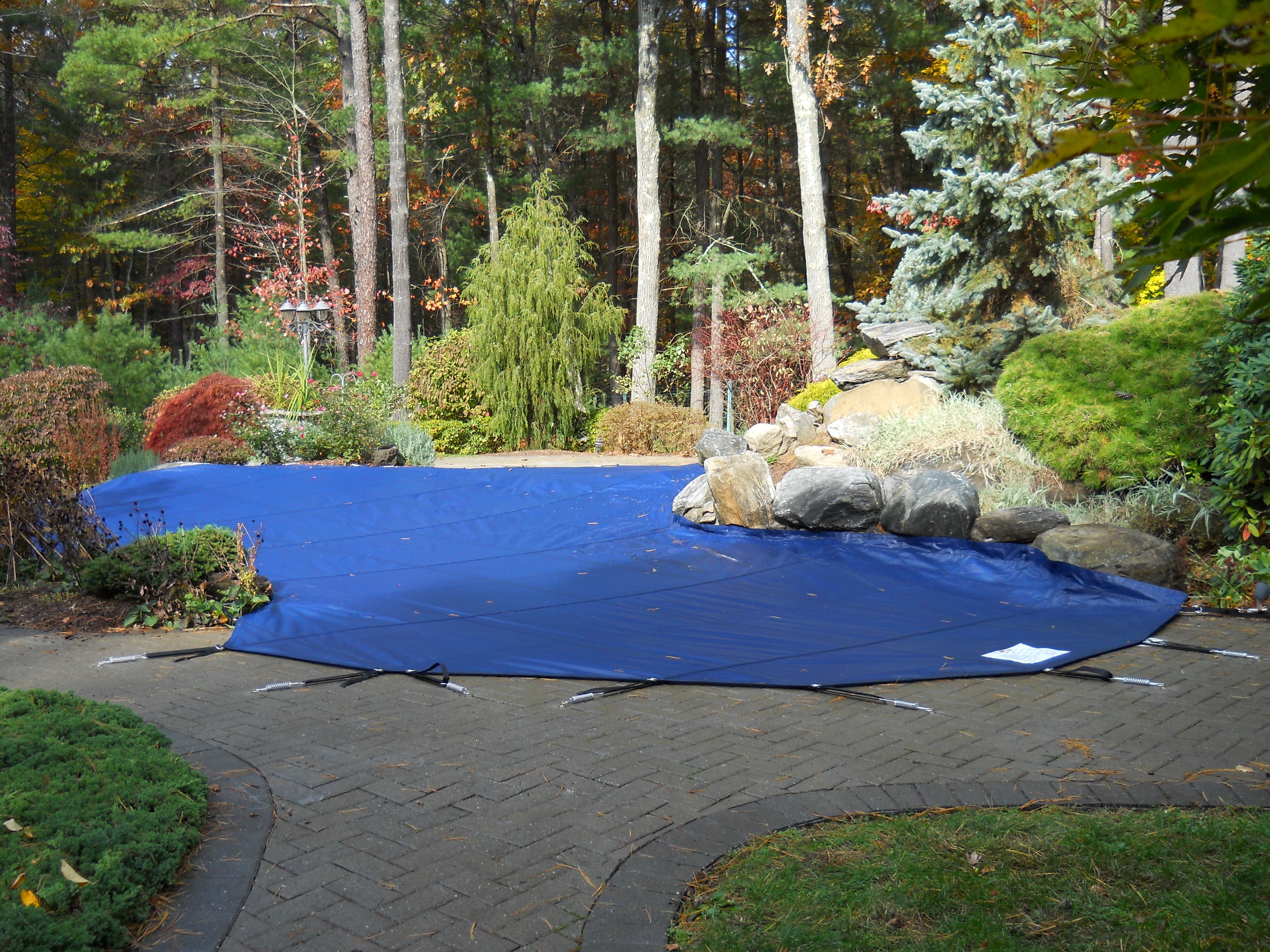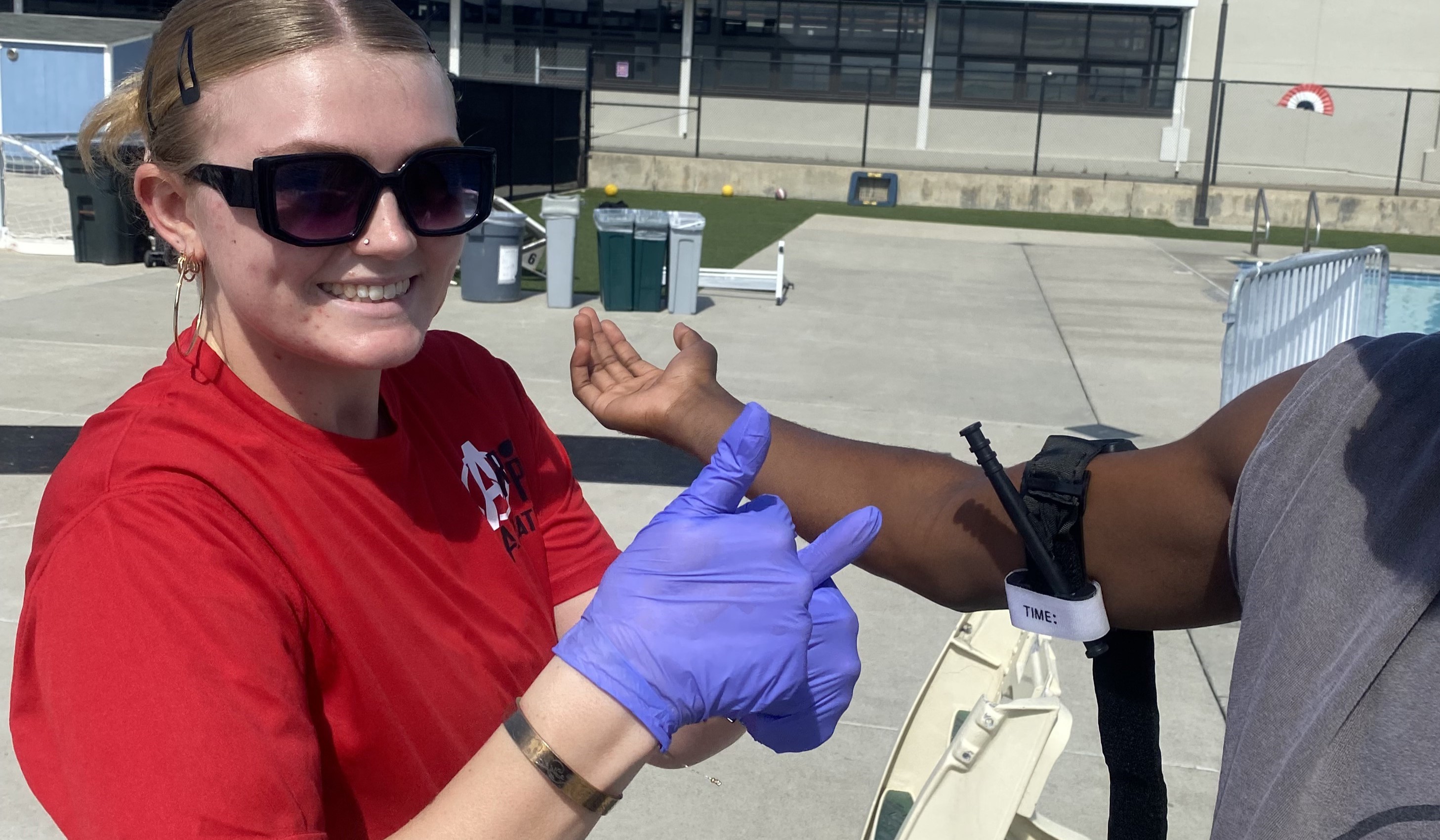Without a doubt, a pool featuring a cover is worth far more than one without.
As is well known in the industry, the benefits of pool covers, both automatic and safety, are numerous, ranging from water conservation to drowning prevention.
Because of this, many consumers and potential clients are coming around to the idea of owning a cover — even if, at first (and second) glance, the cost of adding the product to a design or retrofit may seem daunting.
In conversations with pool builders and cover dealers, many mentioned that 60- to 80 percent of their new builds are being designed with covers from the beginning.
The increasing demand for the product opens up several issues for builders and installers. Should a company service the covers it installs? What are customers capable of when it comes to maintaining their covers? What can be done to avoid common mistakes?
Here, PSN explores how to address these questions to ensure that consumers derive the most satisfaction possible from these products.
To service or not to service
Plenty of builders and installers have departments within their companies that are dedicated to pool service. However, not every service department treats covers the same.
The larger question here is whether a company should invest the resources to service the pool covers that they’ve installed or, in some cases, if they should install covers at all. Several different options present themselves and they run the gamut.
SEE MORE: The Two Big Cover Mistakes to Avoid
Viola Associates, which services Massachusetts’ Cape Cod, has an entire department dedicated to automatic covers. President John Viola says it helps his company deliver timely service.
“It takes 3- to 8 weeks for someone to show up [in New England],” he says. “Customers get extremely angry. Half the time the cover will break halfway open or closed and they can’t get in their pool.”
Viola noted that it also makes sense for his company because in New England, only a couple of pool cover manufacturers have the rights to the area.
But it’s not for everybody.
“Covers are extremely difficult to work on,” Viola says. “For us it hasn’t been a huge money maker. It’s more along the lines of a luxury to have your own department.”
Even those who have chosen to service covers advise very careful consideration before taking on this work. Without intensive expertise, it could prove a liability, they say.
“I discourage people from doing their own,” said Michael Ramos, owner of Ramos Associates in Kihei, Hawaii. “… It could end up fouling up something more.”
In contrast, Mike Giannamore, president of Aqua Pool & Patio in East Windsor, Conn., says that his company doesn’t service pool covers.
Instead it goes through a subcontractor. While it’s a source of revenue that he’d like to explore, currently his service technicians need the training to do it.
“The intricacies of servicing automatic covers is something that we’re not yet comfortable with,” Giannamore says.
On the other side of the country, in California, Royal Pools chooses to partner with a manufacturer. Royal itself doesn’t perform any installations of automatic pool covers.
“The factory does the install,” says Bill Shepard, manager of the San Jose, Calif. company. “They are our subcontractor. The service guy is out of the factory.”
For Shepard and Royal Pools, the benefit comes from avoiding liability. When the consumer has an issue with their cover, the manufacturer takes care of it, and Royal isn’t liable.
Optimizing safety covers
Not all parts of the country need to think about covers for the off-season.
But for those who live in colder climates, winterizing pools is a larger concern. For this purpose, many turn to safety covers.
To ensure optimal performance, these products should be properly installed and cared for.
Much of the maintenance comes into play before the cover is put on and after it is removed. Once a safety cover is on, generally, there’s no need to mess with it, and most builders and installers discourage homeowners from doing anything to an installed safety cover.
When initially installing a safety cover, remember to allow for the space needed for the cover to stretch. Poor anchor settings and improper spring tension can be a cover’s downfall, eroding its effectiveness more quickly than usual.
First, to help the cover weather the snow load, anchors should be placed the right distance away. Anywhere from 30- to 34 inches from the pool’s edge should work.
Generally speaking, this allows approximately 12 inches for overlap — 6 inches of strap, then another 6 inches for the spring. Along with the right overlap, there needs to be extra space for installers to pull straps tight.
It’s good to remember that spring tension should be tight enough that the cover is taut even after accounting for stretching. Perhaps consider collapsing the springs only part of the way on initial installations so that it can grow over time.
After installation, a safety cover’s performance relies largely on proper winterization.
“We educate on proper chemistry that needs to be adhered to when winterizing,” says Mitch Friedlander, president of American Pool Enterprises in Owing Mills, Md. “[You] want to put algaecide to treat the water. … Certainly verify that the water is set at the proper level.”
Safety covers need at least 18 inches of space between the bottom of the cover and the water. Some of this is to protect the tile, by keeping it away from the water (which will freeze). But the safety cover also needs somewhere to rest once the weight of accumulated snow builds up during the colder months.
Caring for automatic covers
You can’t beat the convenience of an automatic cover. But this largely is due to a more complex system for moving the fabric back and forth with the push of a button.
To keep the workings intact, there is some maintenance required.
Most importantly, customers should clear debris off of the cover before closing it. But while builders and installers can explain this fact, it doesn’t mean clients will listen. It can seem like a tedious process.
“Usually [cleaning the cover] is a two-man operation — one guy with a hose and another with a brush,” Ramos says.
And even with this step, leaves and dirt will naturally find their way into even the most fastidious consumer’s cover vault.
Because of this, Ramos installs extra equipment on his automatic covers. One such tool is specifically designed to combat the debris problem. He installs jets along the entire length of the pool. They’re set 6- to 12 inches apart and are activated when a valve is turned.
As the cover returns to the vault upon closing, the jets spray it off. The accumulated water just goes down the drain in the vault.
“It’s a slick way of doing it,” Ramos says. “The pool covers should be just about maintenance-free.”
Ramos isn’t the only builder using extra equipment to help keep automatic covers in tip-top shape. Several builders spoke of installing sensors on various parts of the covers they put in.
For instance, John Viola says customers often will let the mechanism overextend or hit the far wall, causing the covers to break. While some covers have automatic sensors to indicate when it’s time for the cover to stop moving, most don’t, he says.
On the covers that don’t come with sensors, Viola makes sure to install them.
Extra sensors or safety switches are added for waterfeatures as well. Both Giannamore and Viola say that they build triggering mechanisms into the cover systems.
“There’s a trigger mechanism that stops the waterfeature from flooding the cover,” Giannamore says. “Generally speaking, there will be some feature that shuts off the [waterfeature].”
With these safeguards in place, covers should provide years of service.











